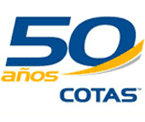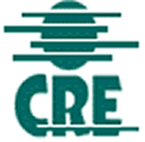Marianne
Marianne and the Motto of the Republic
Marianne is the embodiment of the French Republic.
Marianne represents the permanent values that found her citizens’ attachment to the Republic: “Liberty, Equality, Fraternity”.
Employed alternately by opponents of the republican system and by its defenders, the name Marianne (Marie-Anne), popular with the working classes, is the symbol of a Republic constructed by the gradual adherence of all of its citizens to one motto.
Little by little, Marianne became the most widely shared representation of the motherland, at times fiery and warlike, at times pacific and nurturing.
Distant origins
The image of Marianne comes down from Antiquity. The Phrygian bonnet was worn under the Roman Empire by former slaves who had been emancipated by their master and whose descendants were therefore considered citizens of the Empire. Democracy was already represented as having a woman’s face: at her feet a tiller and a sack of wheat, slumped on the ground and overflowing; having little regard for power, she is concerned above all with the aspirations of the people.
Marianne in the throes of the French Revolution
From 1789, sculptures and paintings began to use female figures as vehicles for the values of the French Revolution, chief among which is Liberty. Liberty appears in the guise of a young woman dressed in a short robe, her right hand holds a pikestaff adorned with a Phrygian bonnet. She is a warrior symbolizing the idea that liberty is something that must be fought for. Sometimes the same figure of Liberty appears more thoughtful, grave, draped in a long tunic, in a more serene posture. In this case, several of her attributes are absent, among which the Phrygian bonnet worn by the revolutionists.
Equality also takes the form of a young woman, followed by children carrying the symbols of the three orders of the Ancien Regime: the agricultural tools of the Third Estate, the Bible of the Clergy and the crown of the Nobility : synthesis of the old and the new France. A l’origine, The original figure of Equality held a scale in equilibrium, the scales of the Last Judgement, but the artists of the Revolution preferred the builder’s level, symbol of equality rather than equity.
Fraternity holds a staff surmounted by a Gallic rooster; following the figure are two children leading a lion and a sheep yoked together.
In 1792, the young Republic chose to be embodied in the features of Marianne, the motherland.
Marianne often appears wearing a helmet and bearing arms, like Athena of Greece. The Republic is warlike and protective, she will fight for her values, first among which is Liberty, as at Valmy, where she asserted her universal calling in the face of the reactionary monarchists. A decree of 1792 stipulated that the “state seal was to be changed and should henceforth bear the figure of France in the guise of a woman dressed after the fashion of Antiquity, standing upright, her right hand holding a pikestaff surmounted by a Phrygian bonnet, or Liberty bonnet, and her left hand resting on a bundle of arms: at her feet, a tiller.”
Marianne has recovered her former attributes, in particular the lion and the throne, but in addition to the sword or the bundle of arms, she now holds the blue, white and red French flag. At her feet the code of law and the Declaration of the Rights of Man and the Citizen are displayed.
At the same period, her enemies caricatured the Republic and gave it the popular name of Marie-Anne, saying, if the Republic wanted to look after the common people, it should bear their name.
A weakened Marianne: Empire and Restoration
After 1799, the fall of the Republic and the institution of the Empire saw Marianne’s representative value weakened, even though the theme of Liberty continued to thrive. Many artists perpetuated it in their work; one of the best known of these was Eugène Delacroix, in his Liberté Guidant le Peuple aux Barricades, painted in 1830.
The name Marianne reappears briefly with the Second Republic, but often in a pejorative sense. Partisans of the social republic, “the reds”, adopted the name for their own cause. In 1848, a contest was organized to define a figure that would represent the new Republic, one which would once again extol the values defended by the Revolution.
When Napoleon III proclaimed the Empire in 1852, he replaced the figure of Marianne that was displayed on the coins and postage stamps with his own effigy. But the emerging opposition groups, desirous of reestablishing the Republic, rallied around the figure of Marianne.
Marianne returns, the Paris Commune and the Third Republic
With the institution of the new Republic, the Paris Commune encouraged the cult of the bare-breasted freedom fighter coifed with the red Phrygian bonnet of the sans-culotte. Paris never called her Marianne, however, this was the name given her outside the Capital. Every town and village had its statue or bell bearing the name that recalled the great revolutionary moments: 1789, 1830, 1848.
In 1871, after the fall of the Commune, the founders of the Third Republic sought a means of reviving the symbols of the Republic without at the same time encouraging revolutionary movements. They therefore shunned the Phrygian bonnet for the crown of ripened wheat, taken from the sunburst crown on the 1848 coins. But the model was only partially adopted, and throughout France, crowned statue vied with bonneted statue. The name given these statues varied with the social category: the working-class republican called her “Marianne”, the bourgeois republican spoke of “the Republic”, and the anti-republican, when he eschewed the insulting “la gueuse” (the beggar-girl), used “Marie-Anne”, in its pejorative sense.
Gradually the number of busts in town halls and schools grew. In 1880, the Paris City Hall commissioned a sculpture wearing a Phrygian bonnet, and gradually the model became standardized: the bust of a young woman with placid features, some wearing a crown of wheat, but more often the Phrygian bonnet. The Republic had settled in.
Marianne in place, a bust in every town hall
Gradually over the twentieth century, every town hall acquired a bust of Marianne, now systematically wearing the Phrygian bonnet and stripped of her other attributes (bundle of arms, builder’s level or scales).
Marianne now appears in an expurgated version. The latest figures most popular with today’s town halls are modeled on the features of Brigitte Bardot and Catherine Deneuve. Alongside the official imagery, there is also a growing number of private representations; and political cartoonists have seized upon Marianne as the image of the Nation.
The assimilation of the French Republic to La Marianne is now a fact. Marianne has survived five republics and the vicissitudes of history, and her symbolic capacity has increased as the idea of the French Nation has become more firmly established.
For more information
* M. Agulhon, Marianne au Combat: l’imagerie et la symbolique républicaine de 1789 à 1880, Flammarion, 1979.
* M. Agulhon, Marianne au Pouvoir: l’imagerie et la symbolique républicaine de 1880 à 1914, Flammarion, 1989.
* F. Furet et M. Ozouf, Le Siècle de l’Avènement Républicain, Gallimard, 1993.
In English
* M. Agulhon, Marianne into Battle: Republican imagery and symbolism in France, Cambridge University Press, 1981.















